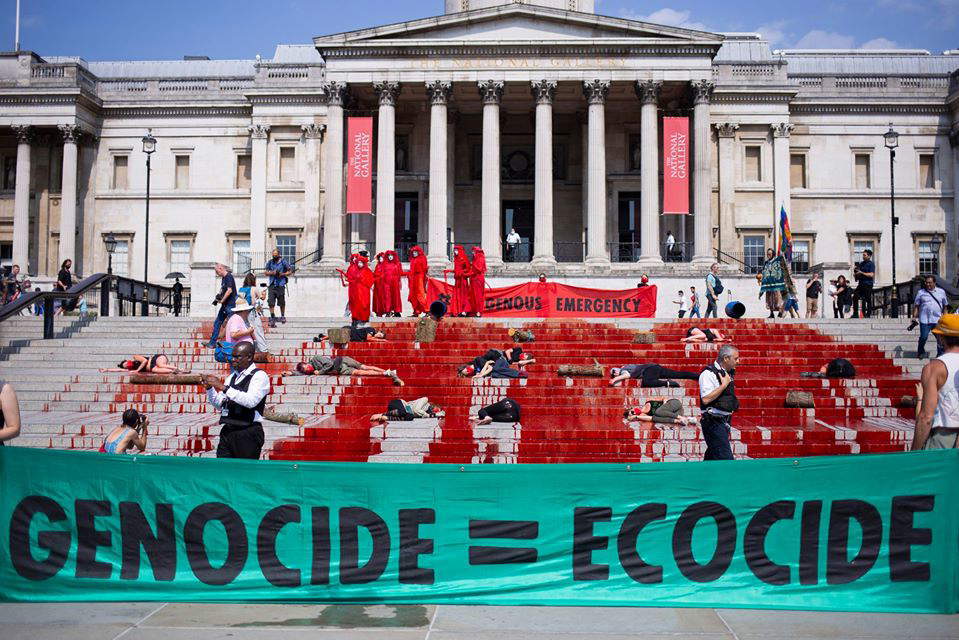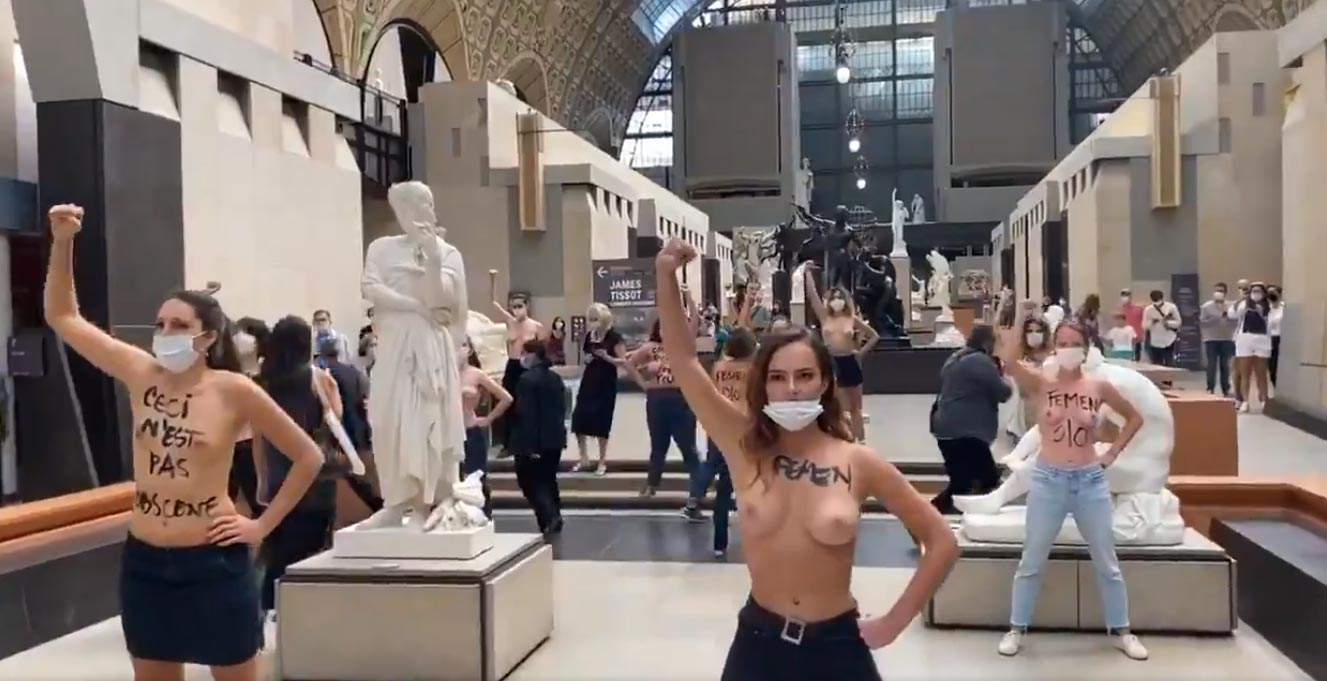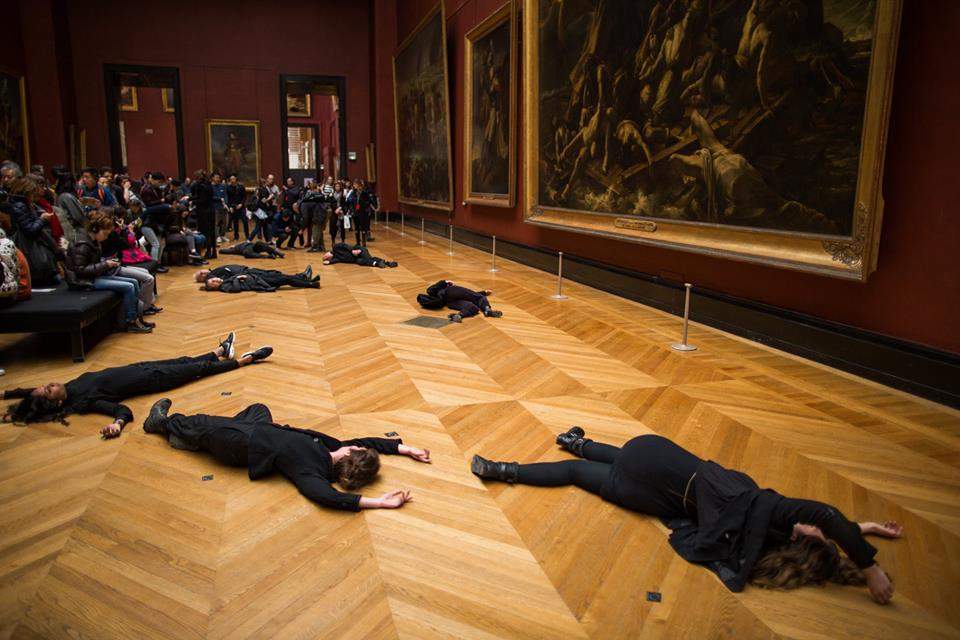From museums to protest sites. A signal to be heard
A few months ago, Congolese Mwazulu Diyabanza attempted to steal an African artwork from the Musée du Quai Branly along with some activists. This was to express his political dissent against the colonial exploitation of his country of origin that filled the halls of several museums dEuropa. Already President Macron announced in front of the cameras in 2017 that France would return the cultural heritage looted from the countries of sub-Saharan Africa over the past centuries even though so far only very few artifacts have actually been returned to their rightful owners. In the wake of the recent riots triggered by Black Lives Matter even the British Museum has had the bust of founder Hans Sloane the physician and naturalist who had ties to slavery removed.
Is a kind of historical revisionism taking place that is changing the paradigm for reading our museums’ collections? For years activists of every political color or ideology have been demonstrating at major museums and cultural sites for a wide variety of reasons. From native rights to endangered animal rights, from climate change to the feminist movement, this is not the first time museums have become unintentional instruments of contestation or dissemination of ideas and movements. However, protests have not always taken place peacefully and in a respectful manner. A few days ago in Berlin, dozens of artworks were vandalized in the so-called Museum Island in order to contest the alleged satanic origin of some of the monuments preserved there. The defacement was probably organized by a famous anti-Semitic denier close to far-right movements, who has already been kicked out several times by the police for his protests in front of the Pergamon Museum against the ’Throne of Satan,’ an artifact referred to by St. John in Revelation, associated with the famous 2nd century B.C. Altar dedicated to Zeus and Athena. Suddenly we seem to be back in the medieval period when classical statues were branded by Christian monks as works of the devil. More recently, horrifying images of the giant, ancient Buddhas of Bamiyan being blown up by the Taliban for religious reasons come to mind.
 |
| Pro-indigenous protest at the National Gallery in London last August |
 |
| Femen protest at the Musée d’Orsay last September |
 |
| Environmentalist protest against Total at the Louvre in March 2018 |
We certainly cannot equate all protests by distinguishing those that take place with respect for the works and legality or conversely those that irreparably destroy priceless artifacts. However, we must recognize that museums or archaeological sites are no longer containers of a cold and mute past. The works of the past continue to speak and evoke shadows on the present. Our cultural heritage is a changing reality in the eyes of contemporaries that continues to be reinterpreted by our society based on the information or misinformation we receive from outside. Although the first step begins in schools, it is also the job of museum curators and scholars to communicate properly, in which case even taking a stand, with scientific courage, on any or potential ideological controversies that may be shaping around major museum collections. Today it is no longer enough to be an expert on a work of art, but one must be able to contextualize it in the time and place in which it is exhibited. One has to be able to make it talk to the many audiences and also the so-called non-publics, that is, all those categories of potential users who apparently feel that they do not have an interest in visiting a museum or a collection. For this reason, curators must be aware of and adhere to the reality around them, listening to voices of dissent as long as there is still the possibility of reasonable dialogue.
Let’s try a provocation: what if an explanatory note were added next to the Benin sculptures and all those stolen in the colonial period indicating that the museum’s acquisition is in fact the result of a violent repression some two hundred years ago? Perhaps it would no longer be necessary to remove them. Or an online conference could be held to explain to the public that the alleged biblical references of the Pergamon altar cited by the above person to justify his acts are actually based on historical and ideological forgeries. Scientific dialogue with all audiences (even the most difficult ones) will not be the solution to all ills but it could be a basis for establishing trust with all types of audiences.
Contemporary museums can no longer afford to be super partes subjects that merely enhance and preserve their exhibits. They must first and foremost know how to educate and inspire the next generation, transforming themselves into places of education, comparison and social inclusion. This is why it is necessary more than ever to invest culturally, politically and not least economically in these institutions because today’s museums represent a starting point for reading our present and imagining a new future.
Warning: the translation into English of the original Italian article was created using automatic tools. We undertake to review all articles, but we do not guarantee the total absence of inaccuracies in the translation due to the program. You can find the original by clicking on the ITA button. If you find any mistake,please contact us.



























